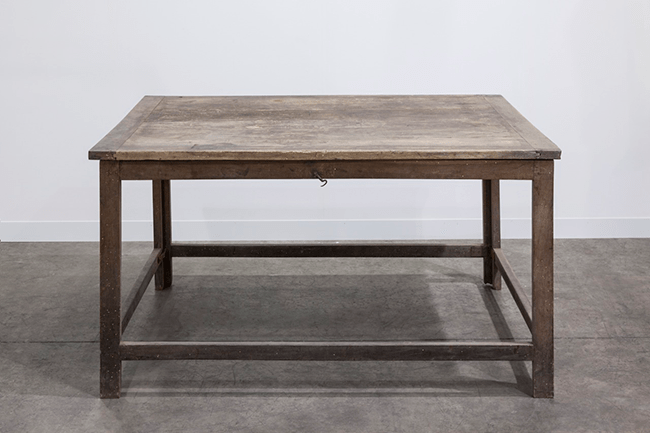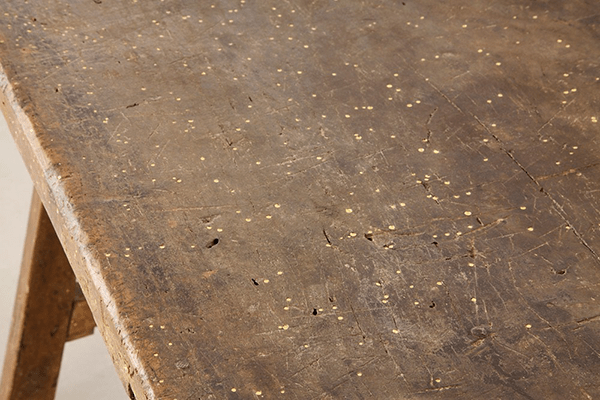Lara Favaretto: When an artwork is reborn

LF 16.001, 2016
Wooden table, 24 kt gold dust 31 1/2 x 59 x 47 1/4 in. (80 x 150 x 120 cm.)
A sense of resignation to the forces of decay and obsolescence runs throughout Lara Favaretto’s work. Several of her art pieces are subjected to forces of decadence, consumption, and putrefaction, and gradually decompose or exhaust themselves.
Lara Favaretto’s practice is the outcome of profound conceptual research. Her works interact with space and with the setting and community around them, and they emerge in powerful, almost violent, actions while appearing with stunning aesthetic quality.
In Adrastus Collection’s most recent acquisition titled LF 16.001(2015), Favaretto represents the eventuality of loss through a recuperative memorialization, often recycling elements from previous installations as new works, reusing discarded industrial materials, and encasing found objects in state of ruin.
LF 16.001(2015) is composed by a wooden table on which the artist has intervened, filling with gold dust 24kt the holes created by woodworm. As though in an alchemical reaction, the table – which is destined to be literally devoured by these insects over time- is thus saved from an inexorable process of decay, entering an enchanted and suspended dimension of time.

LF 15.014 (detail), 2015
Favaretto’s artwork LF 16.001(2015), balance between failure and aspiration. The playful, celebratory visual language of Lara Favaretto’s art can be misleading. Despite her work’s evident humor, a tragic undercurrent runs throughout her practice.
Lara Favaretto (Treviso, 1973) lives and works in Turin. Her work has been shown in solo exhibitions at public and private institutions, including Tramway, Glasgow (2009), MoMA PS1, New York (2012) and the Sharjah Art Foundation, Sharjah, UAE. (2012). She has also taken part in many art festivals, such as the Sydney Biennial (2008), Venice Biennale (2009), Sharjah Biennial (2009), Istanbul Biennial (2011), dOCUMENTA (13) (2012), Carnegie International (2013), Manifesta 10 (2014) and she has shown her works in group exhibitions at the Palais de Tokyo (2006), CCA Wattis Institute for Contemporary Arts (2012), and Castello di Rivoli (2014).
